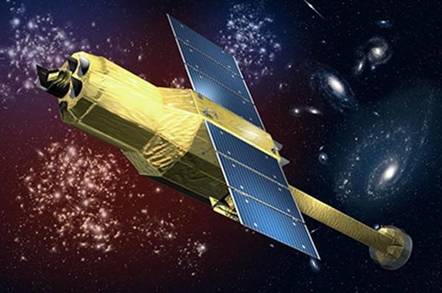JAXA confirms ASTRO-H breakup
Space oddity blamed

Japan's space agency JAXA has confirmed the loss of the ASTRO-H X-Ray satellite.
Originally believed to have been a successful launch, things turned sour for the satellite when the space agency was unable to raise communications with ASTRO-H at the end of March.
As late as last week, space-watchers still hoped it might be possible to rescue the satellite, but Japanese wires are now reporting (in Japanese) the agency has confirmed that won't happen.
Harvard-Smithsonian astronomer Jonathan McDowell tweeted that JAXA identified problems with attitude control, before the satellite broke up:
JAXA believes an anomaly on board the satellite, rather than a collision with space junk, caused ASTRO-H (also known as Hitomi) to break up.
JAXA have reviewed ASTRO-H telemetry, confirmed attitude control issue prior to debris event https://t.co/Jezhh10JcC https://t.co/ks8aTZ4Mif
— Jonathan McDowell (@planet4589) April 3, 2016
It appears ASTRO-H had an attitude control anomaly at 1910 UTC Mar 25, prior to the debris event at 0137 UTC Mar 26
— Jonathan McDowell (@planet4589) April 3, 2016
JAXA also imply that after the debris event they had no proper comm but got the beacon 4 times up to Mar 29 (and apparently not since :-( )
— Jonathan McDowell (@planet4589) April 3, 2016
Dutch archaeologist and space-watcher Dr Marco Langbroek writes that he believes there are three large pieces plus “a lot of smaller fragments”.
Langbroek writes:
“I interpret this as follows: as indicating breakup from an origin somewhat behind the centre of mass of the satellite (with respect to its direction of movement). This gives the heaviest remaining body (the A fragment), predominantly material originally located near/in front of the centre of mass, a momentum in the direction of movement.
“Most other, smaller parts appear to have been predominantly ejected backwards, which is perhaps some indication that predominantly the 'rear' part of the satellite exploded with a notably backwards impulse.”
Possible causes for the breakup, Langbroek writes, could be a failure of the helium tank the satellite carried to cool its soft X-ray spectrometer, or the nitrogen pressure tank in the thruster system. ®








 User Center
User Center My Training Class
My Training Class Feedback
Feedback











